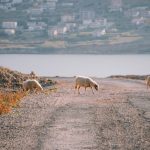As Poslovni Dnevnik/Marta Duic writes on the 24th of October, 2019, the very first results of an in-depth analysis conducted by the World Bank showed that the structural transformation of Croatia’s agriculture is going in the right direction and should stimulate economic growth and create jobs. However, there’s always a but.
The World Bank experts who authored the analysis conclude that Croatian agriculture and rural areas, as well as aquaculture and mariculture, have great potential for development. The structural transformation of these sectors is progressing, in particular, due to the fact that Croatia is an EU member state, and the agri-food sector contributes to the economy and income, and consequently to life in the rural parts of our country.
The analysis also showed that investments in agriculture are economically justified. It is estimated that an investment of 1 million US dollars in agricultural production generates an increase of 5.19 million dollars in the value of the total volume of production in the economy, including the effects of consumption by individual consumers. Public spending on agriculture in Croatia stands at around 1.3 percent of GDP, which is double the EU average.
According to the Smarter consulting company specialising in the agri-food sector, the biggest obstacle to investing in agricultural production, ie attracting investment in that sector, is the status of state agricultural land.
“State land that has not been settled by a long-term concession cannot be the basis for attracting and increasing investment in agriculture, this isn’t long-term in its nature and, due to the long and slow turnover in agriculture, the return on investment is generally long and uncertain.
However, agriculture still depends on weather factors, ie, circumstances that the investor cannot influence, so this is one of the key risk factors that doesn’t exist in a number of other activities. Additionally, it isn’t realistic to expect to invest significantly in a sector where the basic business conditions change drastically with each government term,” they explained from Smarter.
Croatia doesn’t have a long-term and clear agricultural development strategy from which a potential investor would be able to understand what awaits him in the future, what will be and what is a priority in development, that is, where the state will be ready to accompany the investor in case of business difficulties.
Like any other investment, investing in agriculture requires stability of business conditions, predictability of sector policies and a long-term vision. Namely, all EU countries aim to produce their own food and accordingly encourage a range of investment measures, while in Croatia the potential investor is left to himself, there is no clear criteria for benchmarks, and raising productivity and competitiveness, for which investments are a prerequisite, is not a priority. In addition, the role of knowledge, new technologies and the need for continuous investment in agriculture is not adequately understood,” they said from Smarter.
To briefly recall, Smarter is a company responsible for the strategy of agricultural production development in which the profession highlighted the challenges facing Croatia’s agricultural production, as well as solutions to increase it. The team that worked on it held 150 meetings in a year and a half that resulted in 2,000 pages of material.
“The expert team has made an analysis of the state of Croatian agriculture, and our goal is to put it where should be, because alongside tourism, that is the main branch of the Croatian economy.
The value of Croatian agricultural production from 2008 to 2018 decreased from 22.5 billion to 16 billion kuna, it has fallen by around 3.5 billion kuna and has stagnated since Croatia’s accession to the EU. The second pillar is raising production of a competitive export product, such as mandarins. We need the consensus of key stakeholders, intensive and extensive production, regionalisation… We also need integrators of agricultural production and research and development. This alone will lead to long-term sustainable agricultural production, and linking producers is crucial, only it can enable a change in the state of agriculture.
We lack R&D and EU funds are available for this, and we must not neglect that,” said Denis Matijević of Smarter.
Smarter also points out that, so far, the promotion of investments in agriculture through the distribution of EU funds has been indiscriminate, insufficient, without adequate control and assistance and therefore without proper effects. Two Croatian companies, Belje and Osatina, are currently good examples of successful investments, but there is a lot to be desired for when it comes to Croatian agriculture on the whole.
Despite the aforementioned issues, investors are coming…
Croatia is an EU member state with the highest growth in organic production areas across the EU, and the withdrawal of EU funds for rural development has improved significantly in the last two years. In relation to the EU average, Croatia is still ahead of a number of new and old EU member states and is achieving some encouraging results.
One other positive story of how investors are investing in Croatian agricultural production comes from the island of Korčula.
Namely, ten years after the Smokvica winery ceased to exist, the doors of the new Black Island Winery were opened. With this, the Korčula winery, known for many years as the Smokvica Winery, began a new phase. The winery is experiencing a resurgence with the help of Swedish investors from the Zhoda investments financial fund, led by Robert Karlsson, who, in collaboration with oenologists Igor Radovanović and Nikola Mirošević, has opened a modern tasting room and a promising new wine destination from a neglected building.
It is a major investment of more than 5 million kuna, and they plan to further brand the location as an oenological destination and open a museum and presentation centre to educate tourists about these specific indigenous varieties.
Otherwise, it is a winery that produced almost a million bottles of wine a year during its golden period, but in the face of the crisis, it ceased operations and went bankrupt. In addition to renovating the premises and starting production, a wine tasting room and a gastronomic complex with local specialties were opened. With the exception of Croatia, the ultimate goal is to position itself on the European market, and the first packages of wine have already found buyers in Northern Europe, more specifically in Sweden and the United Kingdom.
Make sure to follow our dedicated business page for much more.







